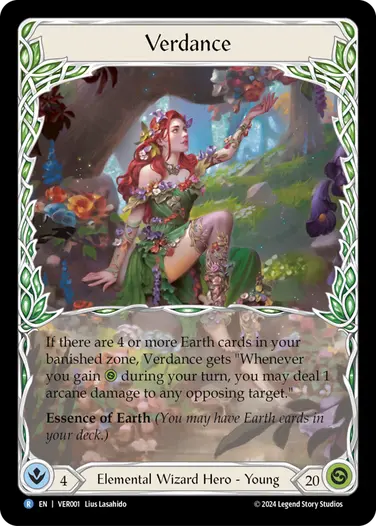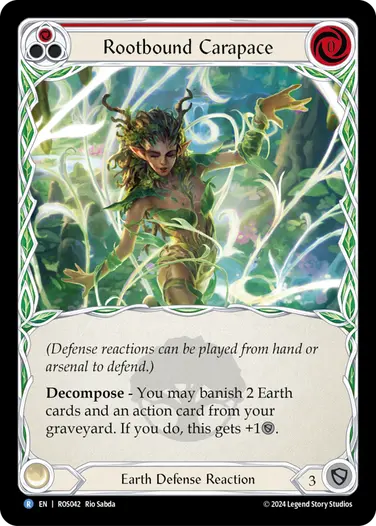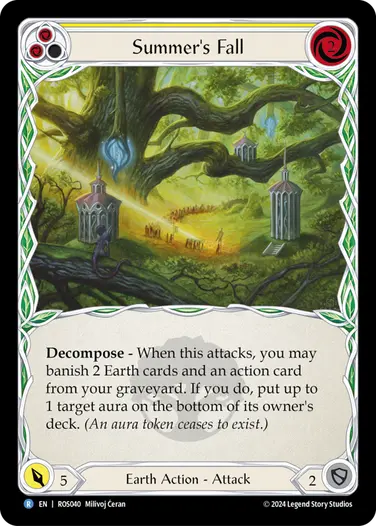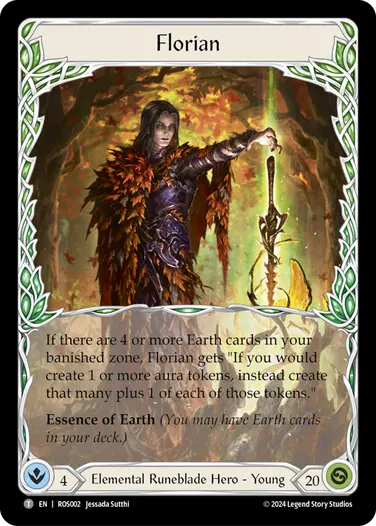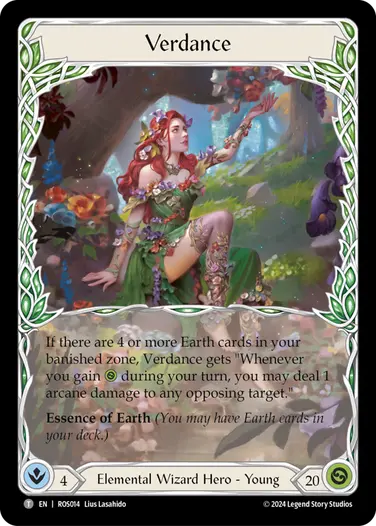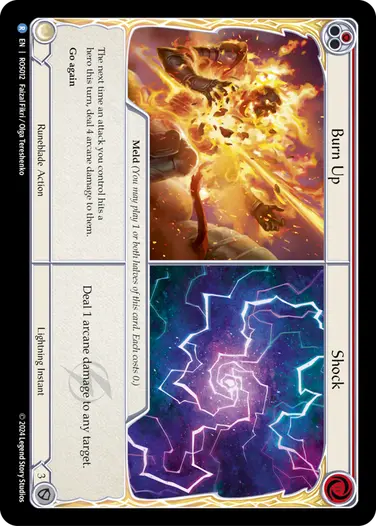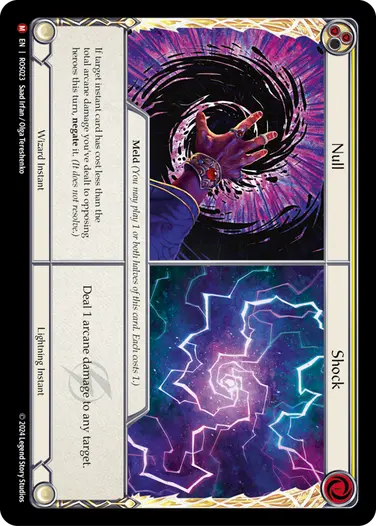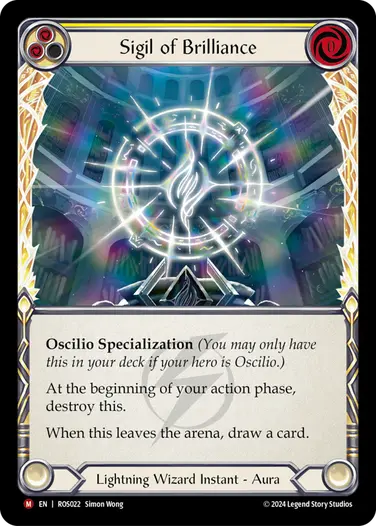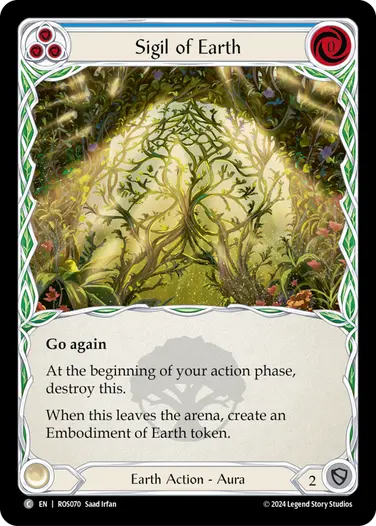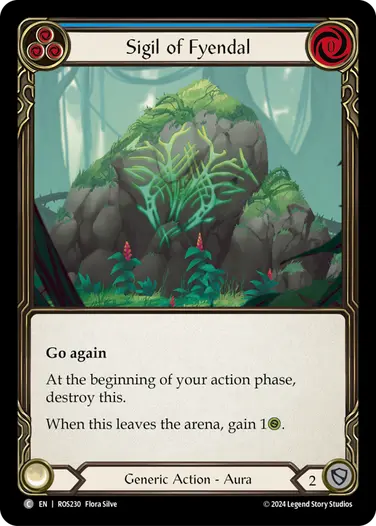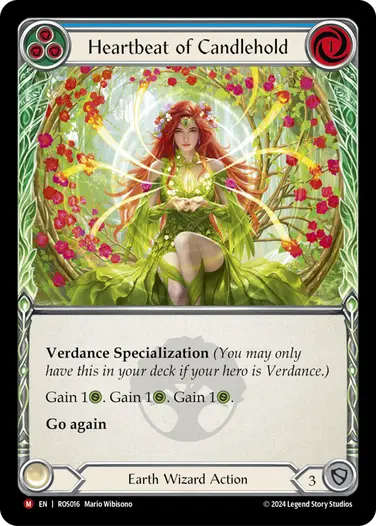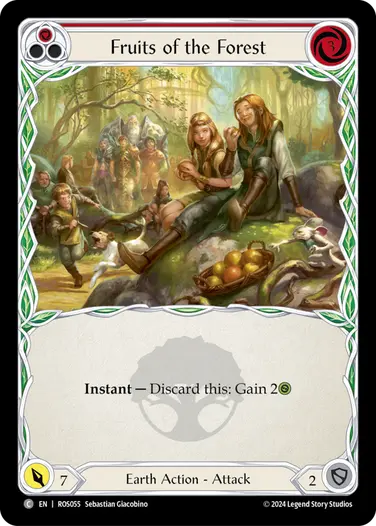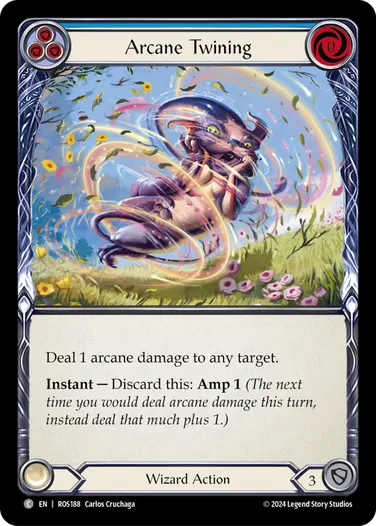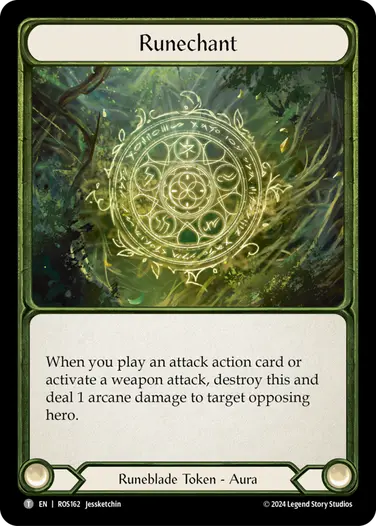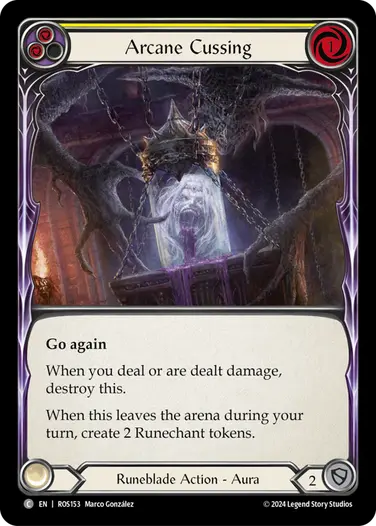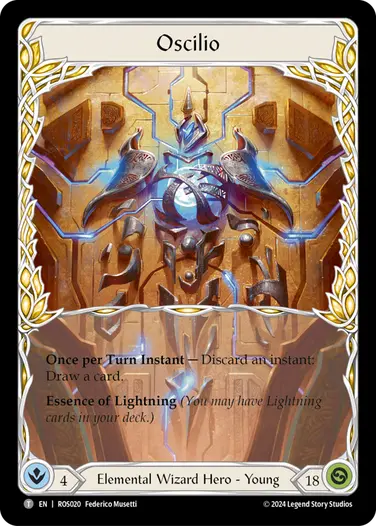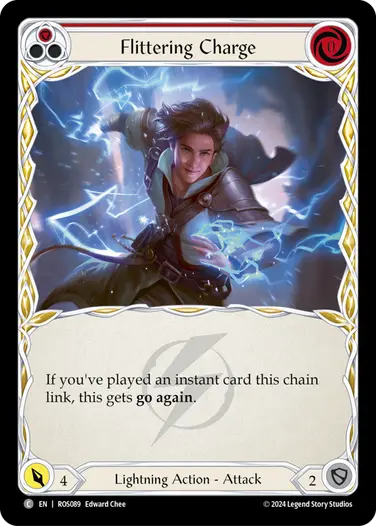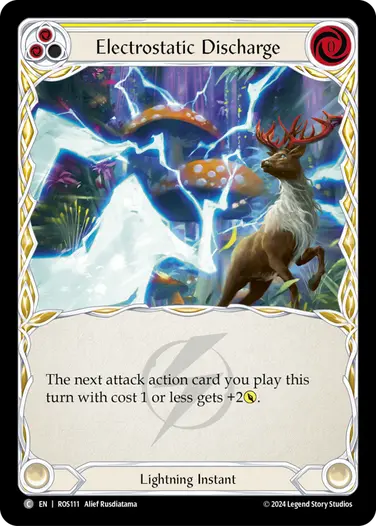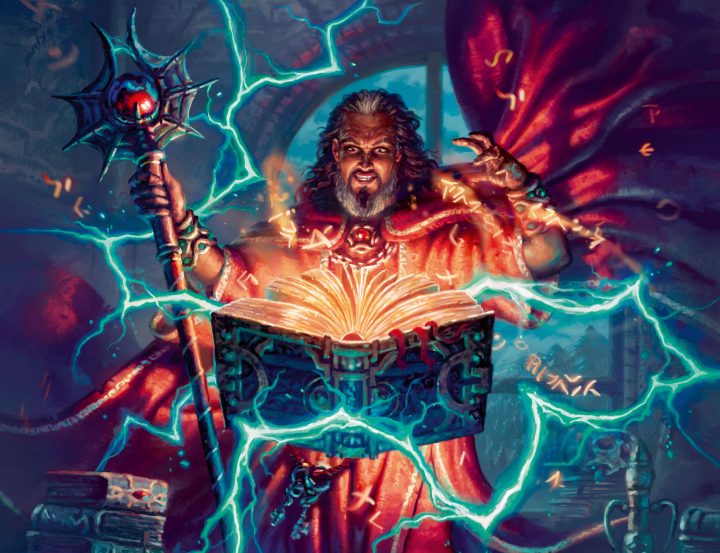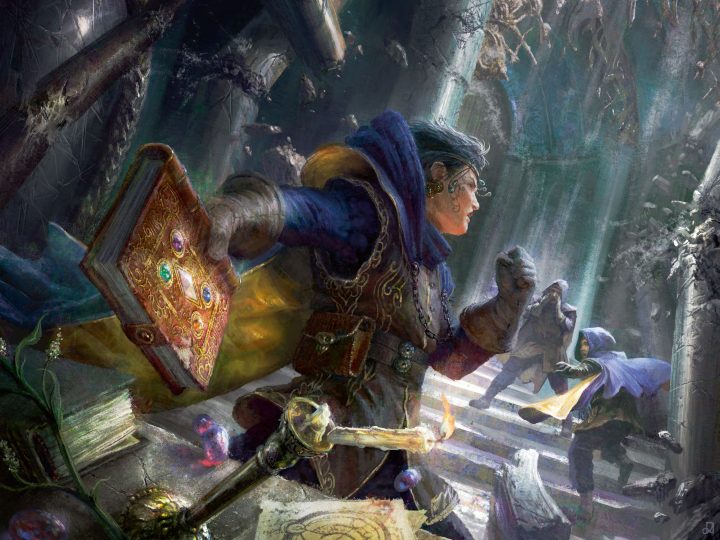The World Premiere of Rosetta is just around the corner! Our rules managers Joshua Scott and Niccolo Paqueo are back again to give us a rundown of some of the exciting changes and interactions you may see while playing Rosetta’s limited formats this season!
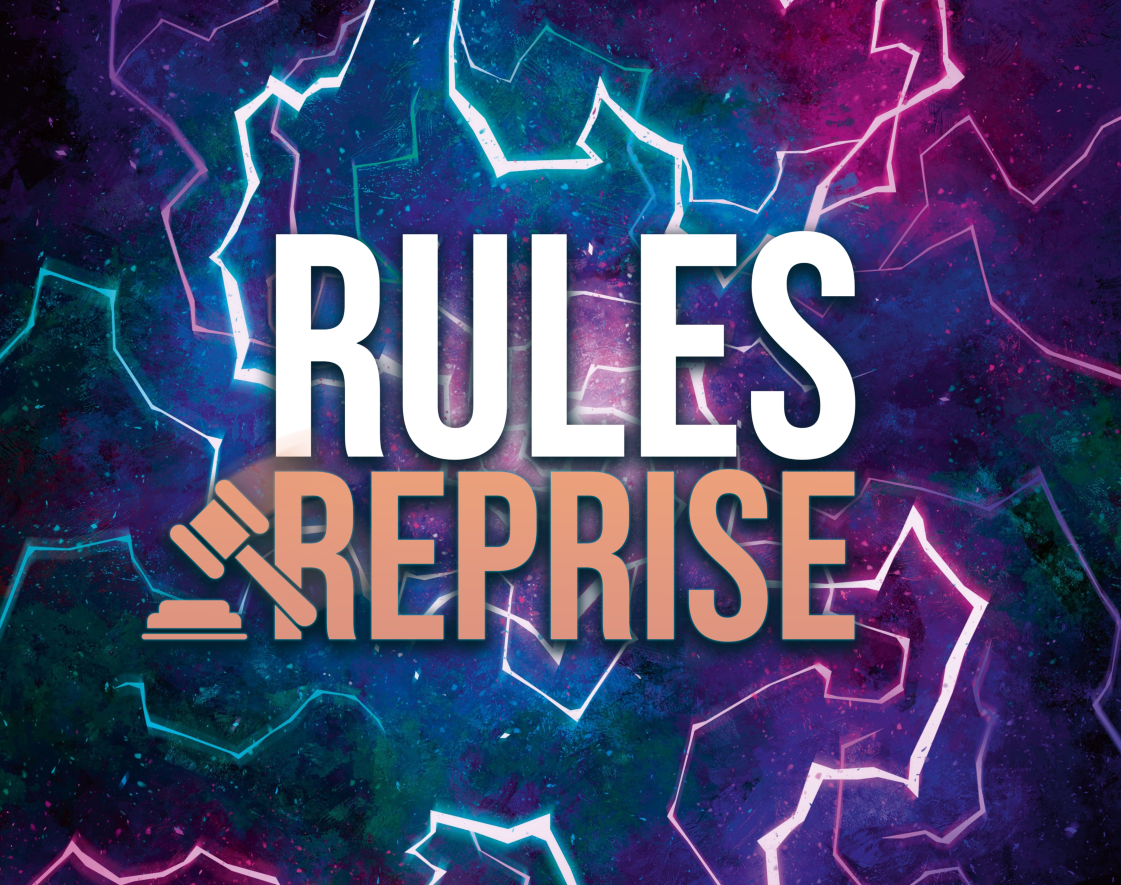
Fast Facts
- Sanctuary of Aria is a macro that all players have access to in each of their Rosetta limited games.
- Decompose requires a total of 3 cards to be banished.
- Go again on melded cards resolve when the melded card resolves for the second time on the stack.
- Aura permanents are auras that are in the arena. Aura cards on the stack and defending cards with the aura type are not considered to be aura permanents and can’t be targeted by effects like Blast to Oblivion.
- Verdance triggers each time you are instructed to gain {h}. For example, “Gain 2{h}” triggers Verdance’s ability only once; “Gain 1{h}. Gain 1{h}.” triggers Verdance’s ability twice.
- Florian’s replacement effect results in an extra token each time you are instructed to create a token. For example, “Create 2 Runechant tokens” would be modified to “Create 3 Runechant tokens”. “Create a Runechant token. Create a Runechant token” would be modified to being “Create 2 Runechant tokens. Create 2 Runechant tokens” with Florian’s effect.
- Cards with an instant-typed ability like Trip the Light Fantastic cannot be discarded to pay for Oscilio’s activation cost.
- You can play your instant cards in the resolution step to give Flittering Charge go again.
What are "Sanctuary of Aria" and Macros?
Debuting with Rosetta, macros are a new, important feature of the Flesh and Blood limited experience: Booster Draft, Sealed Deck, and Blitz Preconstructed formats.
Exclusive to Rosetta, players will be able to harness the power of the Sanctuary of Aria. It is not considered to be part of your card-pool and does not start in your deck zone. When you begin a game in one of these Rosetta limited formats, each player places a Sanctuary of Aria into the arena before you reveal your heroes.
The Sanctuary of Aria is an integral part of this set’s limited format experience, and players will always start with one in play, and it cannot be forgotten. If you notice that you forgot to put the Sanctuary of Aria on your side of the arena at the start of the game, you simply place a copy of it on your side at that time. Make sure you call a judge before you do this so they can help facilitate this fix for you.
Tyler and Nic begin a game using their Florian and Verdance Blitz Preconstructed decks. As this is a Rosetta limited format, each of them places a Sanctuary of Aria macro on their side of the arena.
Macros like Sanctuary of Aria are not considered to be cards (or tokens) for the purposes of effects. For example, you won’t be able to destroy it using effects that require you to “destroy a card”; however, these macros have abilities and effects that interact with the game, which can have a profound impact when used at the right time.
With Sanctuary of Aria, you may activate its ability and pay 2 resources to generate a prevention effect that reduces the next 1 damage that would be dealt to you by a source of your choice that turn (similar to Helio's Mitre from Uprising). You may activate this as many times as you would like, provided you can pay the cost each time. But beware, you will destroy your Sanctuary of Aria at the end of the turn you activated it. If you do, it is simply removed from the game and ceases to exist.
Tyler plays Comet Storm // Shock on their turn, melding the card and targeting Nic with both the Comet Storm and Shock effects. Nic activates and resolves their Sanctuary of Aria. The melded Comet Storm // Shock layer resolves for the first time, resolving Shock’s ability first to deal 1 arcane damage which is prevented by Nic’s Sanctuary of Aria effect. Tyler receives priority again and passes; however, Nic activates and resolves Sanctuary of Aria again. The melded Comet Storm // Shock layer resolves for the second time, resolving Comet Storm’s ability to deal 5 arcane damage to Nic, which is reduced to 4 arcane damage due to Sanctuary of Aria. Tyler ends their turn and Nic destroys Sanctuary of Aria, removing it from the game.
Sanctuary of Aria in Rosetta is just the beginning of how macros will shape Flesh and Blood limited gameplay. Future sets may have their own exclusive macros, bringing new and exciting ways to engage with limited formats.
How does decompose work?
When resolving a decompose ability on a card like Rootbound Carapace or on a triggered effect like Summer’s Fall, you may choose and banish 3 cards in total from your graveyard: two Earth cards and one action card. Banishing these cards may cause other effects you may have to become active like Florian’s or Verdance’s abilities on their hero cards.
The Earth cards may be action cards, and the action card may be an Earth card. Banishing an Earth action card will count towards either one of the two Earth cards being banished or the action card being banished, not both at the same time. This means you need to banish THREE cards in total.
It's also important to note that you choose whether to banish at the time the layer resolves on the stack, and there's no priority between choosing to banish, banishing, and then doing the remaining effects. More on that next week!
Tyler is playing as Verdance and has 1 Earth card in their banished zone. Tyler attacks Nic with Blossoming Decay (red), triggering its effect. When Blossoming Decay’s triggered effect resolves, Verdance banishes a total of 3 Earth action cards from their discard pile. This results in Verdance getting their triggered ability from their hero card as they now have 4 Earth cards in their banished zone. The rest of Blossoming Decay’s triggered effect resolves, gaining Verdance 1{h}. This causes Verdance’s newly gained ability to trigger, which results in Tyler targeting Nic with 1 arcane damage.
If a melded card has go again, when do I get the action point?
For melded cards with base go again or go again received from an effect, its controller will get the action point on their turn when it resolves for the second time.
If a melded card gets an ability from an effect, those added abilities will generate their effects when the melded card layer resolves a second time on the stack, in addition to any existing abilities that exist on the left-side of the split card.
Be cautious though, if the melded card with go again is negated before the card resolves the second time on the stack, you will not go again and will not get an action point as the melded card’s layer (with its abilities) is removed and is no longer on the stack to resolve. This is also the case if the melded card has resolved already once on the stack but is negated before it resolves the second time.
Tyler plays Burn Up // Shock on their turn, melding the card and targeting Nic with the Shock effect. Both players pass priority and the melded Burn Up // Shock layer resolves for the first time, dealing 1 arcane damage to Nic with the Shock effect.
Tyler receives priority again and passes; however, Nic plays a melded Null // Shock targeting Tyler with the Shock effect and targeting the melded Burn Up // Shock card with the Null effect. Both players continue to pass priority for the rest of the turn. Nic’s melded Null // Shock resolves for the first time, dealing 1 arcane damage to Nic. Then, Nic’s melded Null // Shock resolves a second time, negating the Burn Up // Shock, removing the card and its layer from the stack. As a result, Tyler will not get the action point from the go again on the Burn Up // Shock as it did not resolve a second time.
Auras in Rosetta
In Rosetta, players will have the opportunity to play with a new suite of auras at their disposal. Several cards in Rosetta reference aura permanents as part of their effect text, which can be tricky to understand.
To review, aura permanents are essentially cards with the aura subtype that entered into the arena from being resolved on the stack or through an effect. Aura cards that are waiting to resolve on the stack or that are defending cards on the chain link are not considered to be aura permanents.
This is a critical distinction that we want to highlight. Let’s take a look at some of the trickier interactions involving aura permanents in Rosetta.
If I attack with Blast to Oblivion and play an instant-typed Sigil from hand, can I return it back to hand using the triggered effect?
No, you cannot return the same Sigil with the instant-type you played to trigger Blast to Oblivion’s triggered effect as it is not a legal target for the effect.
When you attack with Blast to Oblivion, it creates a triggered effect that triggers the next time you play an instant card this chain link. When you play the instant-type Sigil from hand and add it to the stack, the triggered effect from Blast to Oblivion triggers, requiring you to target an aura permanent or aura token at that point.
As the instant-typed Sigil card is on the stack, it cannot be targeted by Blast to Oblivion’s triggered effect.
Tyler attacks with Blast to Oblivion (yellow) and generates its delayed trigger effect. Nic defends the attack with Sigil of Earth. In the reaction step, Tyler plays Sigil of Brilliance from hand which triggers Blast to Oblivion’s delayed triggered effect, thinking that they could target the Sigil of Brilliance to return it to hand and trigger its draw a card effect; however, Tyler cannot target Sigil of Brilliance as it is just an aura card on the stack and not yet an aura permanent. Tyler cannot target Nic’s defending Sigil of Earth either because it is just a defending card with the aura type and not an aura permanent. As there are no aura permanents nor aura tokens that can be targeted, Blast to Oblivion’s triggered effect ceases to exist and is not added to the stack.
If I defend with Sigil of Fyendal, does it trigger when the combat chain closes?
No. Most Sigil cards in Rosetta have an ability that triggers when the Sigil leaves the arena. These abilities are functional and active when the Sigils are permanents in the arena but not while they are defending. In general, defending card abilities are not functional, unless they specifically say so (e.g. “While this is defending”, “If this defends…”, etc.). As a result, they won’t trigger if they are cleared when the combat chain closes.
Tyler attacks Nic with Heaven’s Claws (red). Nic defends with Sigil of Fyendal from hand. Tyler closes the combat chain. Nic clears the Sigil of Fyendal from the combat chain but does not gain 1{h} from its ability.
How does Verdance’s ability work when I gain life?
If you have the right number of Earth cards in your banished zone, Verdance’s ability will trigger each time you are required to gain {h} during your turn. You will deal 1 arcane damage for each of those triggered effects that resolve. However, not all gain {h} effects are created equal, so let's go over them.
If you were to resolve Heartbeat of Candlehold, you would gain 1{h}, then gain 1{h}, then gain 1{h}. These are three separate events of gaining life, therefore Verdance’s ability triggers three separate times. These triggered effects will be added to the stack after Heartbeat of Candlehold finishes resolving.
In contrast, if you were to resolve the activated ability of Fruits of the Forest, you would gain 2{h}. This is one single event of gaining life, not two separate events (if it were, it would be written “Gain 1{h}; Gain 1{h}.”). This results in Verdance’s ability triggering only once and dealing 1 arcane damage when that triggered effect resolves.
Tyler is playing as Verdance and has 4 Earth cards in their banished zone. Verdance resolves Heartbeat of Candlehold, gaining a total of 3{h}. Because Heartbeat of Candlehold is written as “Gain 1{h}. Gain 1{h}. Gain 1{h}.”, Verdance’s ability triggers three times. After resolving Heartbeat of Candlehold, Tyler adds those triggered effects to stack, targeting Nic for each effect.
Both players pass priority on the first two triggered effects, dealing 1 arcane damage each. Before the third triggered effect resolves, Tyler discards and resolves Arcane Twining (blue) to generate an Amp 1 effect. Both players pass priority on this third triggered effect and Nic is dealt 2 arcane damage due to the increase from the Amp replacement effect.
How does Florian’s ability work when I create aura tokens?
Florian’s ability generates a replacement effect that results in an extra token being created each time you are required to create an aura token by an effect. Just like how Verdance interacts differently among the different gain {h} effects in Rosetta, Florian is the same way with the different create aura token effects.
With a card like Germinate, you create a Runechant token or Embodiment of Earth token. This process is repeated X number of times, where X is specified at the time you played Germinate. These are considered separate events of creating an aura token that are modified by Florian’s replacement effect to create 1 additional token.
Tyler is playing as Florian and has 4 Earth cards in their banished zone. Tyler resolves Germinate, declaring X equal to 2. Tyler resolves the first “Create a Runechant or Embodiment of Earth token” effect, and decides to create a Runechant token. Because Florian’s effect is active, Tyler instead creates 2 Runechant tokens. Tyler repeats the process 2 additional times, choosing Embodiment of Earth each time and creating 4 Embodiment of Earth tokens total. Tyler finishes resolving Germinate with having created 6 tokens total and gaining 3{h}.
In contrast, if you were to resolve an effect where you would create a specified number of tokens (except 0), you will only create that many tokens plus 1 with Florian’s effect.
Tyler is playing as Florian and is resolving Arcane Cussing’s (yellow) triggered effect to create 2 Runechant tokens. Because Tyler has 4 Earth cards in their banished zone, they create 3 Runechant tokens instead.
Can I discard a single Trip the Light Fantastic to get its prevention effect and also draw a card with Oscilio?
No. You cannot do both because each requires a separate card to be discarded for its cost. To activate Trip the Light Fantastic, you must discard it from hand as part of its cost. Moreover, to activate Oscilio, you must discard any one instant typed card from your hand. This means any one card with the instant type in its type box; cards with instant activated abilities like Trip the Light Fantastic printed in their card effect text do not count.
Nic is playing as Oscilio with 2 life remaining and only Trip the Light Fantastic (red) in hand. Tyler plays Overflow the Aetherwell (yellow), aiming to deal 2 arcane damage to Nic to win the game. Nic cannot activate Oscilio’s ability as Trip the Light Fantastic is not an instant card. Nic activates and resolves Trip the Light Fantastic’s instant ability, discarding it as part of its activation cost, to prevent the next 2 arcane damage dealt to them.
Can I play an instant to give Flittering Charge go again after I've dealt damage but before my next attack?
Yes! Go again is checked after the attack’s damage and resolution steps. There's a window to play an instant before go again is checked. If you do, Flittering Charge would get go again in time for it to generate an action point.
Tyler begins their action phase and attacks Nic with Flittering Charge (red). Nic does not defend and takes 4 damage. In the resolution step, Tyler plays Electrostatic Discharge (yellow). As Electrostatic Discharge is an instant, Flittering Charge gains go again from its effect. When Tyler moves into the next step of the chain link (i.e. the link step), they will gain 1 action point from Flittering Charge’s go again.
That's it for this Rules Reprise. Next time, we will explore Rosetta’s impact on Flesh and Blood’s constructed formats and discuss some of the new changes to our rules and policy documentation that will be effective at Rosetta’s release! Good luck to everyone playing in the World Premiere and Calling: Tampa Bay!

